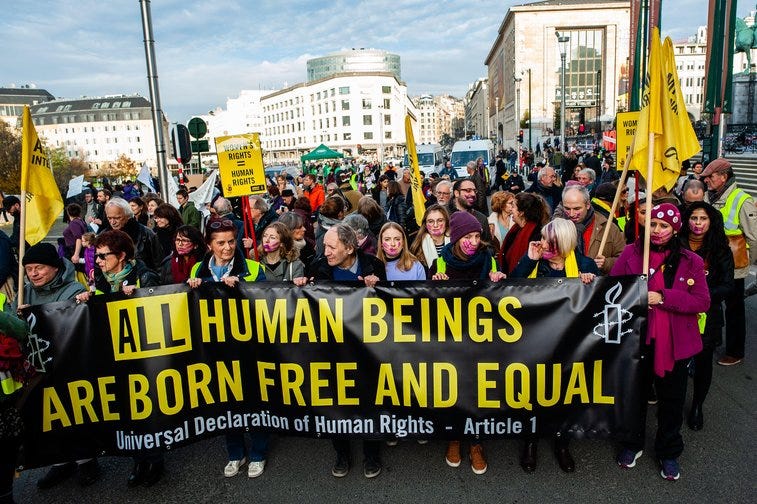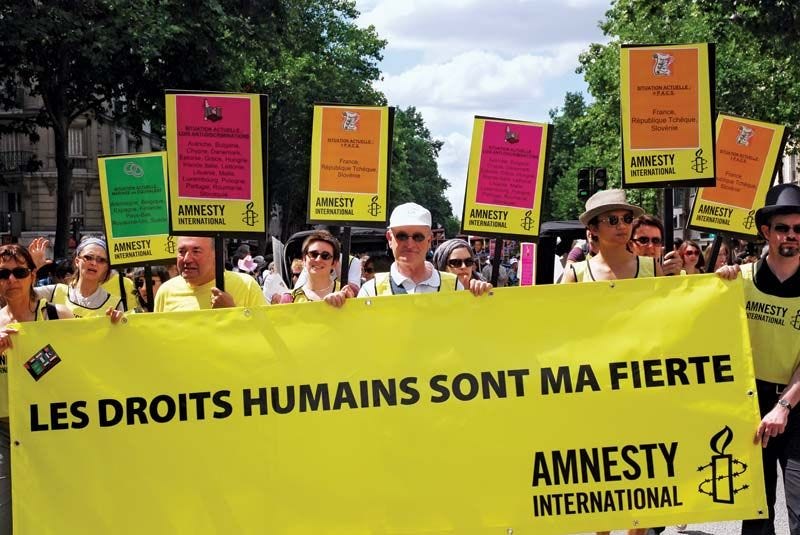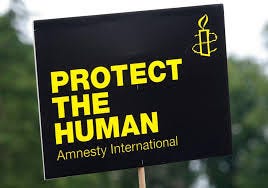Amnesty International is a global movement of more than 10 million people in over 150 countries and territories who campaign to end abuses of human rights. Ironically, or perhaps tragically, even an organisation with such a compelling humanistic mission can fall victim to a toxic culture.
According to a 2019 Report, Amnesty International was found to harbour a "toxic" working environment marked by bullying, public humiliation, discrimination, and other abuses of power.
The investigation, prompted by the suicides of two staff members in 2018, uncovered a severely adversarial culture, with a dangerous "us versus them" dynamic and widespread mistrust in senior management. The Report’s findings threatened Amnesty's credibility as a human rights champion and could have been leveraged by opponents to undermine its global advocacy efforts.
This cultural footprint assessment is based on the findings and recommendation of that Report.
Building Blocks Rank Order and Scores (out of 10)
Edge: 7.8
Entrepreneurship: 7.6
Learning: 6.9
Management: 6.5
Teamwork: 6.2
Leadership: 5.8
Warmth: 5.8
Overall Average: 6.7
Building Blocks Analysis
Edge: 7.8
Amnesty International displayed a strong Edge, demonstrating high commitment to delivering results in alignment with its ambitious mission. However, this focus often led to burnout and excessive stress. Key failures in this dimension included the unrelenting workload and the pressure to exceed expectations despite limited resources, creating an environment where staff felt perpetually overwhelmed. Many employees were regularly expected to work beyond normal hours, leading to high stress levels and exhaustion. Additionally, there was a lack of effective workload management, exacerbating these issues and diminishing overall productivity.
Entrepreneurship: 7.6
The organisation exhibited a strong capacity for translating ideas into successful outcomes. However, resource constraints and high-stress levels sometimes stifled creativity and innovation. Failures in this dimension included inadequate support for innovative projects due to staffing shortages and the high-pressure environment. Staff often felt that their innovative ideas could not be realised because of insufficient resources and overwhelming workloads, leading to frustration and disengagement among those who felt their contributions were undervalued or ignored.
Learning: 6.9
Amnesty valued learning and improvement, with initiatives in place to support staff development. However, these efforts were often inconsistent and lacked comprehensive strategies. Failures included unequal distribution and inconsistent application of learning opportunities, leading to perceptions of inequity and favoritism. Staff reported that while development opportunities existed, access was not uniformly encouraged or supported across regions and levels. This discrepancy fostered feelings of exclusion and frustration among employees who believed they were not given the same opportunities for professional growth as their peers.
Management: 6.5
The effectiveness of management practices varied significantly across the organization. While some managers excelled in supporting their teams, others contributed to stress and disengagement through poor management styles and communication. Key failures included ineffective communication from managers, a lack of constructive feedback, and inconsistency in management practices. Instances where managers failed to clearly communicate expectations or provide adequate support led to confusion and frustration. Additionally, the absence of standardised management training programmes resulted in a fragmented approach to management, negatively impacting staff morale.
Teamwork: 6.2
Teamwork was critical for Amnesty but fell short due to an adversarial workplace culture and lack of trust. Staff often worked in silos with limited opportunities for cross-functional collaboration. Failures included inadequate opportunities for teamwork and a lack of trust among staff and leadership. Initiatives like the peer support programme were under-utilised and poorly managed, further hindering effective teamwork. The fragmented work environment and the absence of structured team-building efforts made it difficult for staff to collaborate and feel a sense of community.
Leadership: 5.8
Leadership played a critical role in Amnesty's culture but was marred by failures in management and allegations of power abuse. Failures included instances of bullying and discriminatory behaviours from some leaders, which significantly undermined trust and morale. While some leaders were seen as inspiring and motivational, others created environments of fear rather than support. This disparity in leadership styles indicated a significant need for consistent leadership development and accountability measures. Additionally, some leaders were detached from the daily realities of staff, causing further dissatisfaction and disengagement.
Warmth: 5.8
The low score in warmth highlighted significant gaps in how the organisation cared for its people. Failures included insufficient counselling resources, perceived reactive wellbeing initiatives, and a lack of psychological safety. Wellbeing initiatives often appeared inadequate and failed to meet staff needs. Reports of limited access to mental health resources and a lack of comprehensive wellbeing strategies highlighted the urgent need for a more proactive and supportive approach to employee wellbeing.
Analysis of Cultural Dynamics
The cultural dynamics at Amnesty International were incredibly complex and deeply interwoven. The organisation's strong commitment to delivering results and fostering innovation often clashed with significant management failures and a toxic workplace culture. This duality created a unique set of challenges that impacted the organisation's overall effectiveness and employee wellbeing.
The report's findings illustrated a complex interplay between various building blocks of Amnesty's Culture Footprint.
The Leadership demonstrated significant failures in fostering a supportive and inclusive atmosphere, substantially contributing to the toxic environment. Leaders who should have been role models failed to exemplify trust and inclusivity. This had a ripple effect, adversely impacting other cultural components. Ineffective Management practices, highlighted by instances of public humiliation and bullying, exacerbated the adversarial atmosphere, deterring employees from trusting their supervisors and undermining the ethical standards of the organisation.
The lack of genuine Warmth or care for employees' wellbeing was glaringly evident. The inadequate handling of work pressures and absence of supportive mechanisms pointed to a clear disregard for creating a safe and nurturing environment. This was closely tied to an excessive focus on Edge: the relentless pursuit of results and performance targets overshadowed the importance of employee support and recognition. This imbalance led to widespread burnout and significant mental health issues among staff, further degrading the workplace atmosphere.
The toxic environment also profoundly disrupted Teamwork and collaboration. The pervasive 'us versus them' mentality eroded trust and cooperation, isolating employees and impeding collective efforts. A lack of cohesive teamwork further isolated individuals, making it harder to foster a supportive community within the organisation.
Furthermore, the adversarial culture stifled opportunities for Learning and Entrepreneurship. The climate of fear and distrust prevented employees from engaging in continuous improvement or exploring innovative ideas and approaches. Staff members were less likely to take risks or propose new solutions, limiting the organisation's adaptability and responsiveness.
This interlinked degradation among the cultural building blocks paints a picture of an organisation in crisis. Addressing these systemic issues will require significant structural changes.
Lessons for Other Organisations from Amnesty International's Experience
1. Balanced Focus on Results and Wellbeing
Amnesty International displayed a strong commitment to delivering results (Edge: 7.8), but this focus often led to burnout and excessive stress. Organisations should strive to balance achieving high performance with prioritising employee wellbeing. Effective workload management and ensuring adequate support systems are essential to prevent overwhelming employees and fostering a sustainable work environment.
2. Inclusive Leadership and Ethical Management
The report highlighted significant failures in leadership (Leadership: 5.8) and management (Management: 6.5) practices. Instances of bullying, public humiliation, and discriminatory behaviours by some leaders significantly undermined trust and morale. Cultivating leaders who exemplify trust, inclusivity, and support is crucial for setting a positive organisational tone. Implementing fair, transparent, and ethical management processes helps restore employee trust and accountability.
3. Fostering Warmth and Supportive Environment
A low score in warmth (Warmth: 5.8) indicated significant gaps in how the organisation cared for its people. Staff wellbeing should be prioritised through comprehensive and proactive wellbeing strategies. Providing sufficient counselling resources and fostering a culture of psychological safety can create a more humane and supportive workplace.
4. Promoting Teamwork and Collaboration
The adversarial culture at Amnesty disrupted teamwork (Teamwork: 6.2) and collaboration. Encouraging a culture of mutual support and dismantling the "us versus them" mentality is essential. Implementing team-building initiatives and structured team collaboration efforts can rehabilitate the sense of community within an organisation.
5. Encouraging Learning and Innovation
While Amnesty valued learning (Learning: 6.9) and entrepreneurship (Entrepreneurship: 7.6), these efforts were often inconsistent and stifled by the high-pressure environment. Organisations should create a safe space for continuous learning and innovative thinking. Encouraging a learning culture and recognising innovative contributions can rejuvenate the workforce and enhance adaptability.
Conclusion
The complex interplay between various cultural building blocks at Amnesty International created a toxic work environment that severely impacted employee wellbeing and the organisation's effectiveness. By addressing these lessons, other organisations can prevent similar issues and foster a positive, inclusive, and high-performing workplace. Balancing results and wellbeing, cultivating ethical leadership, prioritising support and warmth, promoting teamwork, and encouraging learning and innovation are key steps towards a healthy organisational culture.








